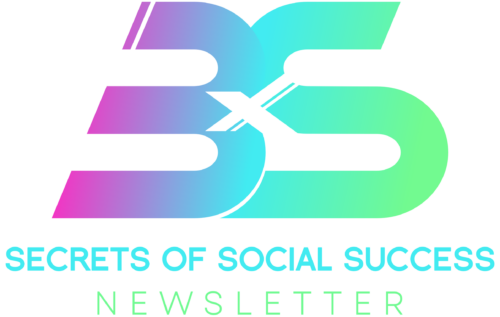Knowing Your Audience: The Key to Social Media Success

In the dynamic landscape of content creation, one fundamental principle stands tall as the cornerstone of social media success…knowing your audience. With the rise of social media as a dominant force in modern communication, this principle takes on added significance. Let’s explore how harnessing the power of audience understanding can elevate your social media strategy to new heights of success.
Knowing Your Audience
Knowing your audience starts with a deep-dive into demographics. Understanding the demographics of your audience is akin to holding a key to unlock their preferences, needs, and pain points. Age, gender, location, and occupation paint a vivid picture of who your audience is and what matters to them. For example, a skincare brand targeting women aged 25-35 living in urban areas will craft content vastly different from one targeting retirees in rural communities.
Targeting Specific Demographics
When targeting specific demographics, it’s crucial to tailor your messaging to resonate with their unique characteristics and preferences. For instance, if your audience consists primarily of millennials, incorporating humor and pop culture references into your content may enhance engagement. Conversely, if your audience comprises professionals in a specific industry, adopting a more formal tone and providing informative content relevant to their field may be more effective.
Adapting Content for Different Age Groups

Different age groups have distinct preferences and consumption habits. Understanding these nuances allows you to create content that appeals directly to each demographic. For example, while younger audiences may prefer short, visually appealing content, older demographics may appreciate longer, more detailed posts.
Customizing Messaging for Various Geographical Regions
Geographical location plays a significant role in shaping consumer behavior and preferences. Tailoring your messaging to reflect regional nuances and cultural sensitivities can enhance audience engagement and foster a stronger connection with local communities. Whether through language localization or region-specific promotions, customizing your content strategy based on geographical regions can yield impactful results.
Delving into Interests
However, demographics only scratch the surface of audience understanding. Delving deeper into their interests reveals the passions and pursuits that captivate their attention. Whether it’s travel, fashion, fitness, or technology, aligning content topics with audience interests fosters engagement and encourages interaction. This alignment creates a sense of resonance, drawing audiences closer to your brand.
Crafting Content Based on Interests

Crafting content based on audience interests requires thorough research and a nuanced understanding of their preferences. Utilize social listening tools, conduct surveys, and analyze engagement metrics to identify topics and themes that resonate most with your audience. Additionally, consider leveraging user-generated content and incorporating storytelling elements to create authentic and relatable experiences for your audience.
Curating Content for Niche Communities
Within larger interest categories, niche communities with specific interests and passions often exist. Identifying and curating content tailored to these niche audiences can foster deeper engagement and loyalty. By catering to their unique needs and preferences, you can position your brand as an authority within their community and cultivate a dedicated following.
Exploring Cross-Interest Content Themes
Sometimes, audiences exhibit overlapping interests across multiple categories. Exploring cross-interest content themes allows you to create content that resonates with diverse segments of your audience simultaneously. By tapping into these intersections, you can expand your reach and appeal to a broader spectrum of potential followers and customers.
Deciphering Behaviors
Yet, the most elusive aspect of audience knowledge lies in deciphering their behaviors—their digital footprints that offer clues to their online habits and preferences. Analyzing metrics such as click-through rates, time spent on page, and social media engagement unveils patterns that inform content strategy decisions. For instance, if a significant portion of your audience accesses content via mobile devices, optimizing for mobile responsiveness becomes paramount.
Optimizing Content for User Behavior
Optimizing content for user behavior involves tailoring the format, delivery, and timing of your content to align with how your audience consumes information. For example, if your audience tends to engage more with visual content, prioritize the creation of videos, infographics, and images. Additionally, experimenting with posting times and frequency can help maximize reach and engagement based on when your audience is most active online.
Analyzing User Engagement Metrics

Regularly monitoring user engagement metrics provides valuable insights into the effectiveness of your content strategy. By tracking metrics such as likes, shares, comments, and conversions, you can identify which types of content resonate most with your audience and adjust your approach accordingly. This data-driven approach ensures that your content remains relevant and impactful in a constantly evolving digital landscape.
Testing and Iterating Content Formats
The digital landscape is constantly evolving, and audience preferences can change rapidly. Testing and iterating content formats allows you to stay ahead of the curve and adapt to shifting consumer behaviors. Experiment with different content formats, lengths, and styles to identify what resonates most with your audience, and be prepared to adjust your strategy accordingly.
Empathy and Connection
In essence, knowing your audience transcends mere data analysis; it’s about empathy and connection. It’s about stepping into the shoes of your audience and seeing the world through their eyes. By understanding their aspirations, fears, and desires, content creators can craft narratives that resonate on a profound emotional level. This emotional resonance forms the bedrock of enduring relationships between brands and their audiences, fostering loyalty that withstands the test of time.
Fostering Emotional Connections
Fostering emotional connections with your audience requires authenticity, transparency, and genuine care for their well-being. Share stories that evoke emotions, respond promptly to their inquiries and feedback, and acknowledge their contributions to your brand community. Building trust and rapport with your audience lays the foundation for long-term relationships built on mutual respect and understanding.
Creating Compelling Storytelling Campaigns

Storytelling is a powerful tool for forging emotional connections with your audience. By weaving narratives that resonate with their experiences and values, you can create compelling campaigns that capture their attention and inspire action. Whether through heartfelt testimonials, captivating visuals, or immersive experiences, storytelling allows you to connect with your audience on a deeper level and leave a lasting impression.
Wrapping Up
In conclusion, the importance of knowing your audience cannot be overstated in the realm of social media marketing. From demographics to interests to behaviors, every facet of audience understanding fuels a strategic approach that yields unparalleled results. By aligning content with the wants and needs of your audience, you unlock the door to social success, forging connections that transcend mere transactions. So, before crafting your next social media post, take a moment to truly understand who you’re speaking to—it may just be the key to unlocking your greatest achievements.

